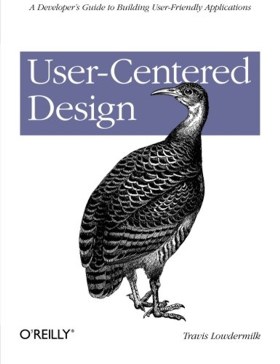| User-Centered Design |
|
Author: Travis Lowdermilk What exactly is user-centered design and who will benefit from reading this slim book?
This book opens with an account of Steve Jobs launch of the original iPhone. It initally seems off topic since on the next page author Travis Lowdermilk quotes Jobs as saying in a 1998 interview: It's really hard to design products by focus groups. A lot of times, people don't know what they want until you show it to them. The author goes on to explain that the main way in which the iPhone changed the landscape was that: The bar had been raised I knew my users were going to expect more.
Chapter 2 tackles the question "What is User-Centered Design?" and does this by telling us what it is not starting with usability. There is, however, a relationship between usability, user-centered design (UCD) and user experience(UX) in that it underpins it all - UCD and UX have to take account of usability and HCI (Human Computer Interaction). The other Is "Nots" - covered by this chapter are: not subjective, not just a matter of design nor simply bug reporting and not a waste of time nor a distraction. These are clearly re-iterated in the summary at the end of the chapter which is presented in a box titled The Short Version. This is a feature of chapters 2 to 9 and makes it easy to locate the main points being made. In Chapter 3 we come to the techniques for gaining input from users, starting with asking questions and listening to answers. The author is quick to point out that sometimes users have requests that are impossible to meet in full, however sometimes even unreasonable demands give the clue to improvements that can be made. The chapter looks at different types of user identifying the Information Overloader, the Control Freak and the Devil's Advocate. It concludes with advice for working with negativity.
Chapter 4 has the title "Having A Plan" and if it convinces you about the usefulness of the template it describes you'll find a sample provided in Appendix A. The core components of the template are:
Each of these is discussed using concrete examples not only in the hospital context in which Lowdermilk currently works but also from an iPhone app he worked on in graduate school. Chapter 5 on Creating a Personal Manifesto promotes the idea that each project, or application, should have a vision statement. This should be backed up by a narrative or story that shows how it can be used and indicates which features to include and, equally importantly which to leave out. This leads on to the idea of creating personas - fictional characters that present personifications of real users - and scenarios - situations in which personas use your app to shape the path and direction of software development. This chapter and the next introduces real world examples. Creativity and User Experience is the next topic and advocates sketching your ideas- something that uses the right side of the brain, which is responsible for abstract thinking and intuition, as opposed to programming which is a left-brained activity. It also suggests borrowing ideas from others and observing other people's work and asking questions about why it works as a way to boost your own creativity and inspiration. The final three chapters of the book are more concrete and are where the book goes beyond generalities. Chapter 7 outlines some design principles starting with the principle of proximity one of the Gestalt principles of perception and concluding with Hick's Law, a model that calculates the time for users to make a decision based on the number of choices they are given, this is also known as reaction time. Chapter 8 pulls together advice from several sources while tackling the practicalities of gathering user feedback. It first considers the question of how many users to include and suggests 5-10. It advocates surveys employing Likert scales and looks at when to employ structured, unstructured and contextual interviews and concludes by briefly outlining A/B testing, where you test users on two interface designs and discover which works better. Chapter 9 is on Usability Studies. These differ from the feedback gathering exercises in the previous chapter in that you don't ask users questions, you observe how they use the software and Lowdermilk gives a detailed account of how to conduct such a study. Chapter 10's title has the message "Your Never Finished" and gives advice for what to do when your app doesn't succeed – advocating throwing away code – something he knows programmers don't like to do. This is a straightforward and practical book with its clear main message being the need to understand users and take them into account when designing software products. It is an easy read and if you've not come across the ideas and principles it discusses is worth your attention.
|
|||
| Last Updated ( Friday, 23 May 2014 ) |

